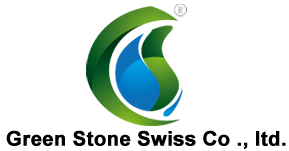Will long-term consumption of colchicine cause side effects
This problem is believed to be of great concern to many patients who are in acute episodes and who are preparing to start uric acid therapy. Colchicine is an alkaloid extracted from the bulbs of colchicum, an ornamental plant that can also be grown for medicinal purposes. The extract of colchicine is used in the treatment of gouts that first appeared in the medical records of the first century AD. It has a history of about two thousand years and is still the first choice for the treatment of acute gout attacks. It is recommended in the gout guidelines of various countries.
It can be seen that colchicine is a safe drug with side effects as long as it is used. During his tenure as Ambassador of Paris, Benjamin Franklin (1706 to 1790) treated his own gout with colchicine. He then wrote a book "Dialogue with Gout" to introduce colchicine to the American mainland. In 1820, two French scientists succeeded in extracting colchicine from colchicum, and colchicum was quantified. More gout medication knowledge, you can pay attention to my headline number and send a private letter "gout" to me. The reason why the accurate quantification of colchicine should be emphasized is that the effective dose of colchicine and the poisoning dose are very close. For the acute treatment of gout, the plasma concentration ranges from 0.5 to 3.0 ng/ml, and the toxicity of colchicine. The effect occurs at around 3.0 ng/ml.
So, for most gout patients, the side effects of colchicine appear before or at the same time as the symptoms of gout improve. These side effects are seen in more than 80% of patients, including increased intestinal peristalsis, abdominal cramps, diarrhea, nausea, and vomiting. When taking colchicine, the gastrointestinal reaction is a precursor to a severe poisoning reaction and must be discontinued as soon as it appears.
put, the analgesic mechanism of colchicine is to inhibit the activity of cells, reduce the swimming, chemotaxis, adhesion and phagocytic activity of cells, reduce or stop the phagocytosis of urate crystals by immune cells, thereby achieving anti-inflammatory and analgesic effects. purpose. However, colchicine does not identify immune cells that cause joint inflammation, and the activity of other cells is also inhibited. Therefore, in addition to gastrointestinal side effects, the following adverse reactions may occur: More gout Medication knowledge, you can pay attention to my headline number and send a private letter "gout" to me.
1. Myelosuppression, manifested as thrombocytopenia, anemia, etc., but there are individual differences in the degree of response, and the old and the weak are used with caution;
2, hepatocyte necrosis, and neurotoxicity due to muscle cell damage manifested as numbness, tingling and weakness;
3, sperm cell reduction or decreased sperm cell activity, leading to infertility;
4, hair loss. Also, although colchicine is excreted by the biliary tract, about 20% of it is excreted from the kidney. Patients with renal insufficiency have an increased adverse drug reaction and need to adjust the dose. Therefore, it is necessary to check liver and kidney function and blood routine during the administration of colchicine.
More gout medication knowledge, you can pay attention to my headline number and send a private letter "gout" to me. The traditional use of colchicine is to take 1 mg, then 0.5 mg per hour or 1 mg every 2 hours until the symptoms of gout are relieved. The maximum daily dose is 6 to 8 mg. , at this dose, most patients will have adverse reactions, so this usage has been eliminated.
In recent years, several studies have shown that low-dose colchicine is effective in treating gout. The gout guidelines in the United States and Europe recommend low-dose colchicine for acute gout and limit its maximum dose (do not exceed 1.5 mg per day). And written a guide to gout treatment.
The European guidelines recommend a low-dose colchicine regimen: colchicine 0.5 mg 3 times a day, continuous medication until the acute symptoms of gout are completely relieved. The symptoms began to diminish 12 hours after the treatment, and the efficacy after 48 hours was like that of non-steroidal anti-inflammatory drugs.
Since colchicine is slower than non-steroidal anti-inflammatory drugs, the first day of a gout attack can also be combined with non-steroidal anti-inflammatory drugs. The data show that the efficacy of this therapy is the same as the traditional high-dose method, but the adverse reactions are reduced. The pharmacokinetic results also showed that the plasma concentration of the low-dose colchicine therapy within 24 hours was like the traditional high-dose therapy.
For patients who need the long-term use of colchicine (such as the use of small doses of colchicine to prevent gout secondary attacks, medication for 6 to 12 months), the best predictor of toxic effects of colchicine is within Creatinine clearance. The endogenous creatinine clearance rate in patients with colchicine toxicity is less than 50, so the normal stable dose of colchicine should be adjusted according to renal function. The last thing to be reminded is that colchicine can't stop the gout inflammatory reaction that has already started (now, it is better to use non-steroidal anti-inflammatory drugs to relieve pain), so the earlier the gout is used, the better the effect, the 24 hours after onset. For internal application, the analgesic effect is most obvious.
Japan's gout guidelines do not even emphasize the use of colchicine in acute gout attacks, but in particular, when acute gout precursors occur, small doses of colchicine should be taken to prevent acute gout attacks. It can be seen that the use of colchicine has been transformed from prevention (pain relief) to prevention.
Send inquiry online For more product information and prices
(Pharmaceutical Ingredients Manufacturer & Supplier & Exporter.)
After sending the online inquiry, we will reply you as soon as possible, if not get any response on time please contact us by Tel or Email. —— Green Stone Swiss
Email: sales@raw-pharmaceutical-materials.comTel: +86 592 5365887
WhatsApp: +86 189 6515 7632
Send inquiry online:

